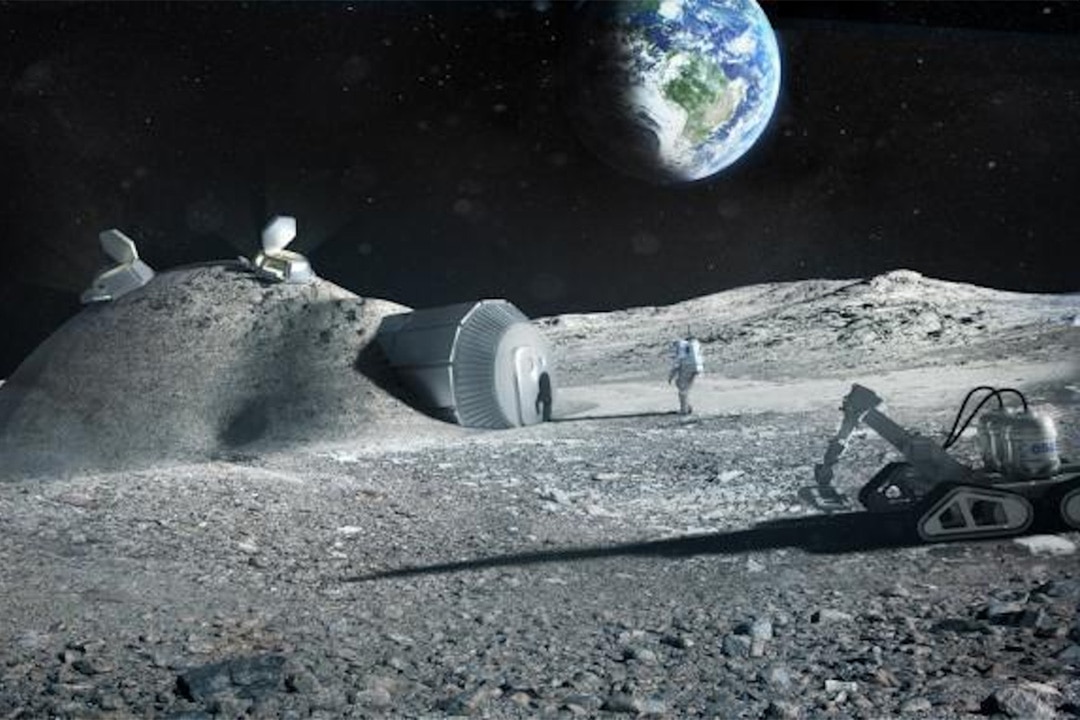Create a free profile to get unlimited access to exclusive videos, sweepstakes, and more!
A lunar base could be made of bricks 3D printed from lunar dust
Lego and Minecraft prepared us for this.

If there’s one way to make your way into the history books, it’s being the first to do something or go somewhere. First Man, based on the book of the same name, tells the story of one of humanity’s greatest firsts, from the perspective of Neil Armstrong, the first human being to set foot on the Moon. The historical landing of Apollo 11 was one of the most-watched events in human history, the crowning moment of a space race between the United States and the Soviet Union which had been ongoing for more than a decade. It was proof positive that our species was capable of leaving our home planet and visiting – maybe even living on – other places in our solar system. Now, more than 50 years after that historic first visit, we’re in the process of returning humans to the Moon, this time for good.
In addition to resuming humanity’s crewed exploration of the solar system, Artemis — named for Apollo’s twin sister in the Greek pantheon — endeavors to create a long-term presence on the Moon, in part as preparation for crewed missions to Mars.
Pulling that off will require more permanent structures on the Moon. NASA has plans for a base camp on the surface as well as the Gateway space station in lunar orbit, but first we need to work out some logistics. Getting anything off planet, whether humans or resources, takes considerable energy and effort. According to NASA, it costs approximately $10,000 for every pound of payload we want to put into orbit, which means we have to be discerning about what we send. Building lunar homes and workplaces might mean shipping all of the building materials, or pieces of prefabbed structures, nearly a quarter of a million miles to the lunar surface. Unless, of course, we were able to find supplies at our destination. While there aren’t any hardware stores on the Moon (yet) that doesn’t mean it’s completely empty of resources, we just have to figure out how best to use them. A team of scientists from the University of Central Florida have devised a way to do just that, using lunar regolith, saltwater, and additive manufacturing to make bricks. Their findings were published in the journal Ceramics International.
UCF exists within the shadow of Florida’s space travel legacy, roughly 30 miles from Kennedy Space Center, and has a long history of supporting space exploration through research and experimentation. For this latest research, researchers from the Complex Structures and Mechanics of Solids (COSMOS) lab, worked in partnership with the university’s Exolith lab to study the effectiveness of construction materials made from extraterrestrial soils. The exolith lab produces simulants of various extraterrestrial materials including lunar, Martian, and asteroid soils for use in experiments.
Twenty samples each were produced of lunar and Martian regolith simulant, in the hope that it might produce a material strong enough to be used in construction on the Moon or Mars. The team used a combination of 3D printing and binder jet technology, an additive manufacturing process which forces a liquid binding agent, in this case saltwater, onto a bed of powder. Regolith simulant samples were laid down and incorporated with saltwater into bricks. Those initial bricks were loose and weak, and easily fell apart. Those aren’t the qualities you want from the material meant to keep you safe on the Moon, but researchers weren’t done yet.
Much like the clay used in terrestrial ceramics, the material didn’t become structurally sound until heat was introduced. Scientists tried a variety of firing temperatures and tested the bricks for microstructures and mechanical properties. They found that both lunar and Martian regolith achieved optimal characteristics when baked to between 1,100 and 1,200 degrees Celsius. When baked at those temperatures, the bricks became sturdy enough to withstand pressures 250 million times that of Earth’s atmospheric pressures. The Moon famously doesn’t have an atmosphere and thus, no atmospheric pressure, but any structure must be able to withstand the internal pressure of a simulated atmosphere. Materials capable of withstanding 250 million times that should do the trick nicely.
Assuming the process works outside of the lab, and on the lunar surface, it could provide a path toward building structures in space with local materials, minimizing the amount of supplies we have to take with us. The European Space Agency is also exploring the possibility of building 3D printed structures on the Moon, utilizing mobile printers to construct the materials at a rate of several meters per hour. That speed could deliver a finished building in as little as a week made almost entirely from materials harvested from the Moon. The Minecraft and Lego generation is going to absolutely crush space travel.


























